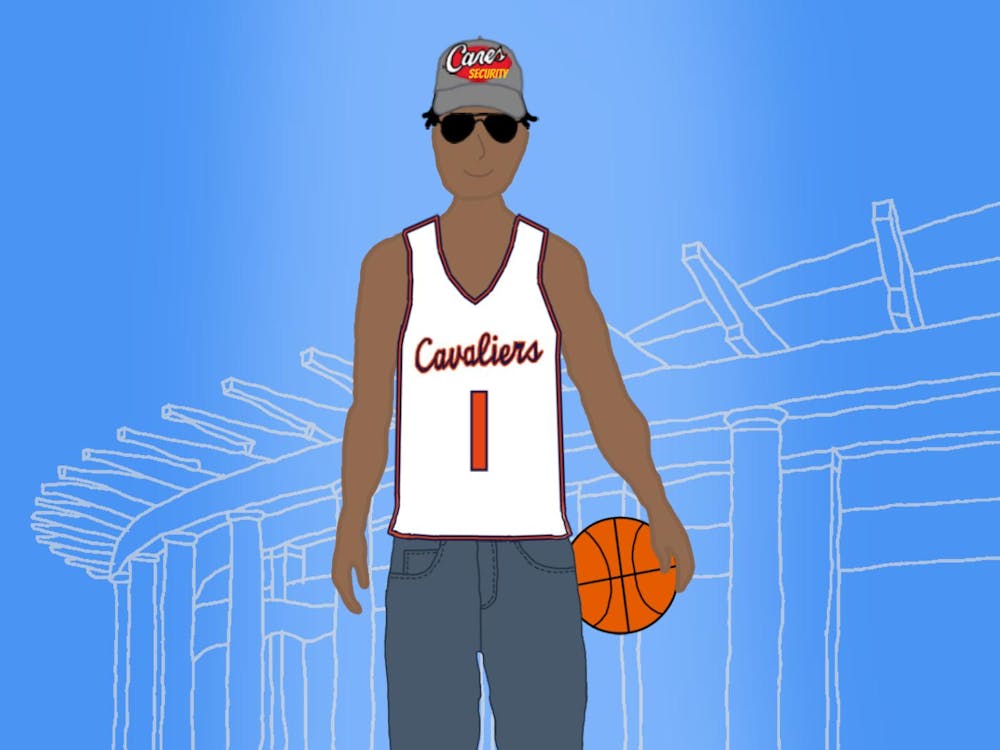Editor’s note: This article is a humor column.
The University unveiled its new plan to rent out subsections of the Academical Village’s green space to students on Wednesday in the hopes of addressing the housing crisis befalling its upperclassmen. This decision comes amidst University President Jim Ryan and University administration’s Sisyphean struggle to ensure that all second-years live on Grounds — by seemingly whatever means necessary. Students who are accepted to live on the grassy areas of the Lawn will be given tents and an Easy Bake oven.
The plan came as a major shock to students, parents and alumni alike, as the Lawn is one of the University’s most treasured historical sites. Recognized as a UNESCO World Heritage site, a work of architectural genius and the backdrop for a tremendous amount of history, the Lawn has long stood as the symbolic centerpiece of the University — until now, when it will serve as a camping ground.
“Building Gaston and Ramazani took far too long, and if we’re meant to get all second-years living on Grounds by 2030, we need to start utilizing the resources we have now,” Ryan said.
In the press conference for the plan, Ryan expanded upon the logistics of how the Lawn would be usable for housing purposes, given its small size, and concluded that the close quarters would increase student bonding. To facilitate this bonding, the Lawn will be divided into 300 equal-ish plots of empty space, each of which will have a tent. Deans of each school will be designated as each student’s landlord.
The deans, in their role as landlords, will impose unique graded consequences for housing infractions. Students will also be held to stricter standards than the surrounding on-Grounds or off-Grounds housing options due to the Lawn’s historic nature. For example, to prevent fires, students will lose one decimal point off their GPA for every candle they light. Campfires are still permitted.
Varsity athletes, students with a GPA over 3.8 and Engineering students — in that order — will receive “luxury” plots. These are only slightly larger than the “standard” plots but they come with an air of superiority and enough space for a small bean bag — though students would have to provide their own.
The University is working to ensure that students living in the tents will experience the same levels of stress as their off-Grounds peers in the hopes that, by replicating the off-Grounds experience, more students will be persuaded to live on Grounds. The University plans to do this through releasing acceptances to the new Lawn spots a day after all other on-Grounds housing placements are released, and giving landlord-deans special training on how to be less responsive.
“Housing stress has proven to be very important to students’ development,” Ryan said. “So we wanted to make it as complicated as possible, so students living on Grounds still get the organic stress-inducing experience of baring their heart and soul to their landlord via email and being met with an ‘Ok.’ sent from their iPhone message three weeks later.”
Some attendees of the press conference raised concerns about students living in tents on the Lawn due to the University’s new policies on tents. Luckily, Ryan explained that setting up these tents will conveniently comply with current University guidelines as long as students don’t engage in any political speech while inside of them.
The University also addressed how it would differentiate students in Lawn rooms from students in Lawn tents, with a focus on ensuring the prestige of Lawn rooms will not be squandered by the new plan. While students living in Lawn rooms will keep their endearing “Lawnie” nicknames, students living on the new allotted plots will be semi-affectionately addressed as “Tentie,” dean and future landlord Lou Tenant explained.
Additionally, while Lawnies will continue to be able to access Lawn-only bathroom facilities, Tenties will be forced to share one singular porta-potty and will shower when it rains. And while Lawnies will receive their personal robes for their bathroom treks, Tenties will receive a singular dish towel.
Tenant also went on to discuss the importance of preserving the meritocratic environment at the University, along with the prestige of living in a Lawn room.
“We wanted, first and foremost, to preserve the egos of our cherished Lawn room students. We don’t want them believing they aren’t special just because now they’ll have more of their equally talented peers alongside them,” Tenant said.
However, the decision is already facing backlash from students and parents alike. The concept of students being housed on the Lawn is already putting well-loved University traditions in jeopardy.
Streaking the Lawn is one cherished custom that will be impacted by this new plan. Streakers will no longer have a clear path to Homer’s cheeks, but rather an obstacle course of their sleeping classmates to nakedly parkour through on their drunken route.
Despite the negative pushback, many students who were rejected from living in a Lawn room can rejoice as they still have a chance to experience tour groups gawking at them when they return from “the shower” — only now with nowhere to hide. Student Council representative Noah Idia reveled in the idea.
“Each generation of students has redefined the Academical Village in the hopes of making their mark on the University,” Idia said. “I am so excited that this generation of students will have the same chance.”







